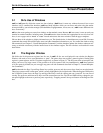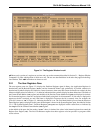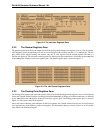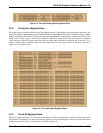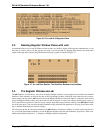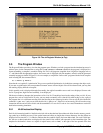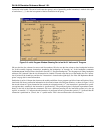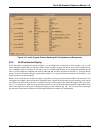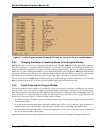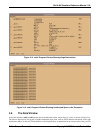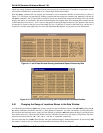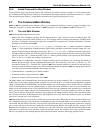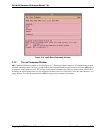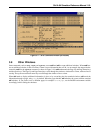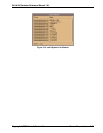
Copyright © 2000 Hewlett-Packard Co. Screen Presentation 3-9
Ski IA-64 Simulator Reference Manual 1.0L
3.5.3 Changing the Range of Locations Shown in the Program Window
xski
doesn’t place a scroll bar in the Program Window. Instead, like
ski
,
xski
provides the pf and pb commands,
described in Section 5.2, “Program Window Commands”. You use these commands to scroll the Program Window for-
wards and backwards, respectively, through the assembly language program display. Ski also provides the pj command
which lets you “jump” the Program Window to any location in the address space. In addition,
xski
understands the Page
Up and Page Down keys and the arrow keys. When the Program Window has the X Window System focus, the Page Up,
Page Down, up-arrow, and down-arrow keys emit the “pb”, “pf”, “pb 1”, and “pf 1” commands, respectively.
You can control the size of
xski
’s Program Window using your window manager’s standard mechanisms. If you are using
ski
, the window is fixed in size; on a twenty four line terminal, the window will be nine lines tall.
3.5.4 Invalid Code and the Program Window
Ski will disassemble the area of memory it is displaying in the program window, regardless of whether the area contains
program code or data. If you tell Ski to display non-program memory, Ski attempts to display the (non-existent) instruc-
tions. When Ski finds bit encodings that don’t represent valid instructions, it displays the word “illegalOp” instead, as
shown in Figure 3-12. Sometimes, Ski may display x’s, indicating that you asked Ski to show a page of memory that
doesn’t exist, as shown in Figure 3-13. There are three cases to consider:
• In application-mode, x’s indicate a page of memory that hasn’t been accessed by the program and therefore hasn’t
been allocated by Ski.
• In system-mode with instruction address translation enabled (the psr.it bit is on), x’s indicate a page of memory for
which no entry exists in the Translation Lookaside Buffer (TLB) or in the Virtual Hash Page Table (VHPT).
• In system-mode with instruction address translation disabled (the psr.it bit is off), x’s indicate a page of memory that
has not yet been accessed by the program.
Application-mode and system-mode programming are discussed in more detail in Chapter 6, “Program Simulation”.
Figure 3-11.
xski
’s Program Window Showing IA-32 Code, the Instruction Pointer, and a Breakpoint



